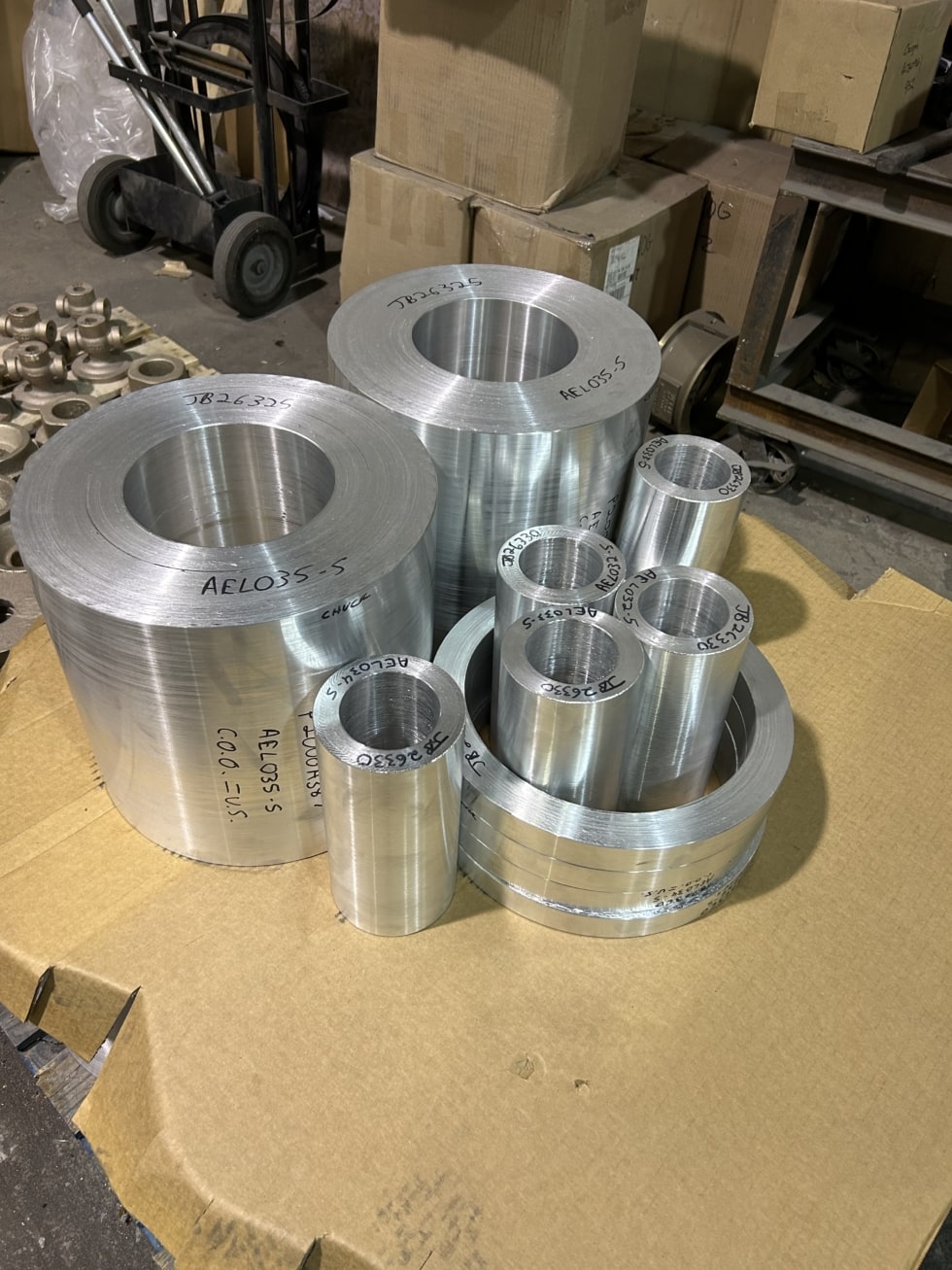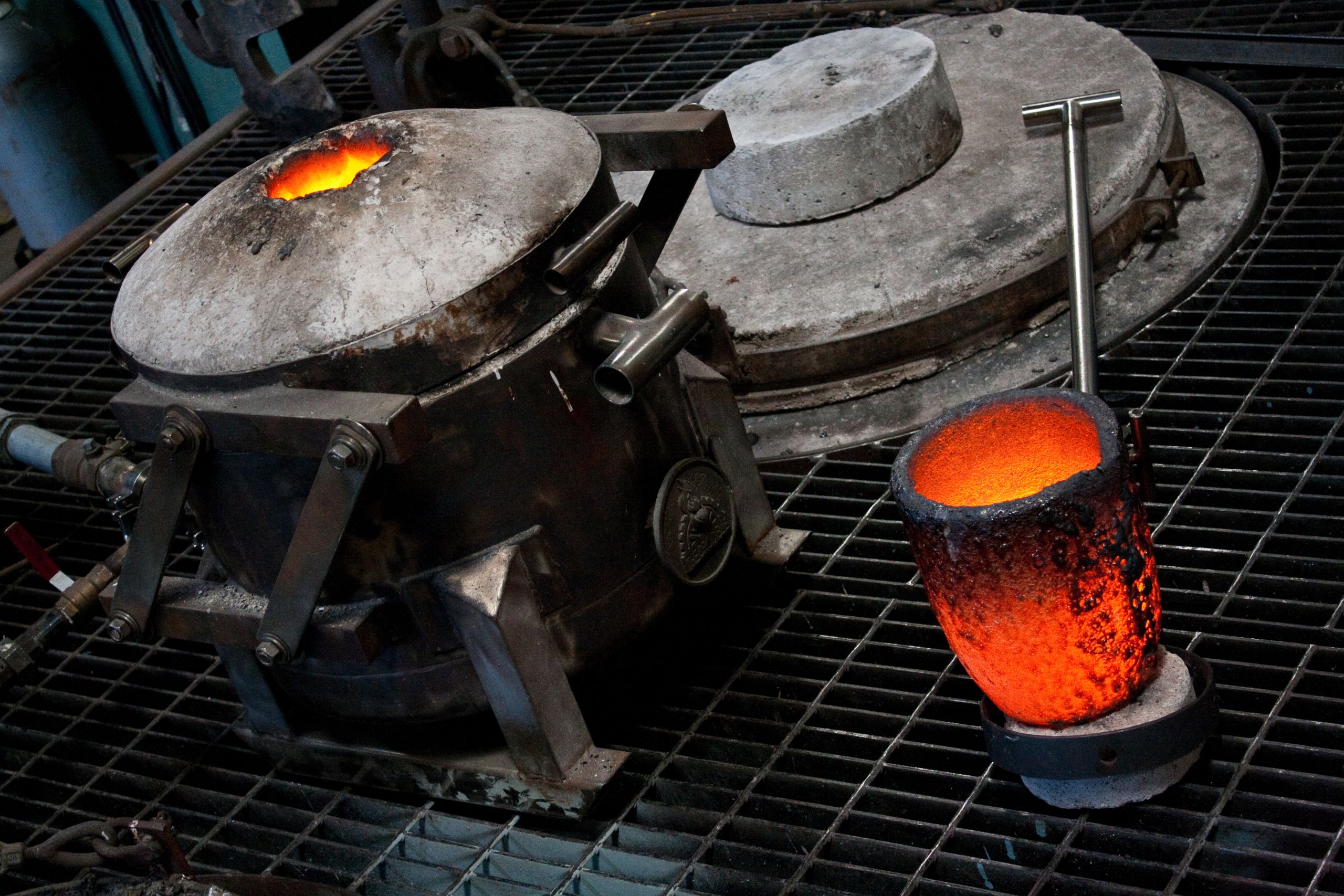Reviewing Aluminum Foundry Wisconsin for industrial casting needs
Comprehending the Perks and Innovations in the Aluminum Foundry Sector
The Aluminum Foundry sector plays a crucial role in contemporary production. Its light-weight homes especially boost gas efficiency, especially in auto and aerospace sectors. Furthermore, Aluminum's resistance to deterioration guarantees longevity in numerous applications. As the industry evolves, developments such as sophisticated recycling and additive production are improving manufacturing techniques. Checking out these innovations discloses not just the benefits however likewise the difficulties in advance for Aluminum foundries in a rapidly changing market.
The Lightweight Advantage of Aluminum
Aluminum's light-weight nature offers considerable benefits throughout different industries, particularly in production and transportation. Its reduced density enables the manufacturing of components that are less complicated to take care of and set up, resulting in reduced labor expenses and boosted efficiency. In the automotive field, lighter lorries add to improved gas economic situation and lower exhausts, aligning with global sustainability objectives. In aerospace, the use of Aluminum decreases the overall weight of airplane, which is critical for improving efficiency and minimizing operational costs.
In addition, Aluminum's lightweight residential properties promote ingenious styles that were formerly unfeasible with much heavier products. This versatility makes it possible for manufacturers to create complicated forms and frameworks while preserving architectural integrity. On the whole, the lightweight advantage of Aluminum not only boosts item performance however additionally drives advancements in innovation and layout, making it a preferred product in various applications.
Deterioration Resistance and Durability
The Aluminum Foundry market is renowned for producing products with premium corrosion resistance, making them excellent for numerous applications. This residential or commercial property, integrated with enhanced architectural honesty, adds to the lasting efficiency benefits that Aluminum elements provide. Consequently, sectors progressively rely upon Aluminum to meet requiring environmental problems without jeopardizing top quality.
Superior Rust Resistance
While different metals deal with considerable obstacles from ecological aspects, Aluminum sticks out for its superior deterioration resistance, making it a favored choice in lots of applications. This residential property is mainly due to a natural oxide layer that forms on the Aluminum surface area, supplying a barrier against dampness and corrosive representatives. Unlike various other steels that may corrosion or degrade over time, Aluminum keeps its integrity even in extreme environments, such as commercial settings or seaside areas. Furthermore, its lightweight nature combined with deterioration resistance makes it optimal for applications in aerospace, vehicle, and aquatic industries. In general, Aluminum's extraordinary toughness not only enhances item longevity but also minimizes upkeep expenses, offering an engaging advantage for makers and consumers alike.
Boosted Architectural Honesty
Developers and designers increasingly acknowledge the significance of boosted structural honesty in modern-day applications, where both deterioration resistance and resilience are critical. Aluminum alloys, recognized for their lightweight properties, additionally display remarkable resistance to rust, making them ideal for harsh atmospheres. The cutting-edge techniques utilized in the Aluminum Foundry sector contribute substantially to producing elements with enhanced longevity. Advanced casting processes and alloy structures are customized to fulfill details efficiency demands, making certain that structures can hold up against extreme problems without compromising integrity. Moreover, surface therapies and layers improve the lifespan of Aluminum products, even more alleviating deterioration with time. This focus on enhanced architectural stability not only extends the functionality of materials yet additionally decreases maintenance costs, strengthening Aluminum's setting as a material of option in different markets.
Durable Performance Benefits
Lasting performance in Aluminum components is largely attributed to their remarkable corrosion resistance and sturdiness. Unlike many metals, Aluminum normally develops a protective oxide layer, which prevents corrosion and degeneration in numerous environments, including industrial and marine setups. This intrinsic residential or commercial property considerably prolongs the life expectancy of Aluminum products, lessening maintenance and replacement costs. On top of that, the light-weight nature of Aluminum improves its applicability throughout markets without compromising stamina. The material's resistance to use and tear also adds to its reliability popular applications, making it a suitable choice for vehicle, aerospace, and building fields. As sectors progressively prioritize sustainability and long life, Aluminum's efficiency advantages align with contemporary engineering needs, strengthening its duty in innovative production processes.
Environmental Impact and Sustainability
 As the Aluminum Foundry sector advances, it significantly focuses on environmental effect and sustainability, identifying the demand for liable useful source methods in the face of environment change. Initiatives to lessen waste and energy consumption are at the forefront, with several shops embracing reusing campaigns to recover Aluminum scrap. This not just reduces resources usage but additionally significantly lowers energy expenditure, as recycled Aluminum calls for only a portion of the power compared to main production.
As the Aluminum Foundry sector advances, it significantly focuses on environmental effect and sustainability, identifying the demand for liable useful source methods in the face of environment change. Initiatives to lessen waste and energy consumption are at the forefront, with several shops embracing reusing campaigns to recover Aluminum scrap. This not just reduces resources usage but additionally significantly lowers energy expenditure, as recycled Aluminum calls for only a portion of the power compared to main production.Additionally, improvements in exhausts control modern technologies are being implemented to lower air contaminants, straightening operations with more stringent environmental guidelines. Factories are likewise checking out alternate energy sources, such as solar and wind, to power their facilities sustainably. By fostering partnership with stakeholders, the industry aims to create innovative solutions that enhance environmental stewardship. Collectively, these campaigns highlight a commitment to minimizing the Aluminum Foundry's carbon impact while advertising a round economy within the production field.
Advanced Manufacturing Techniques
 Revolutionizing manufacturing processes, the Aluminum Foundry market is increasingly incorporating sophisticated manufacturing techniques to boost effectiveness and accuracy. Techniques such as computer numerical control (CNC) machining and additive manufacturing have become crucial elements in maximizing production workflows. CNC machining permits high-precision part construction, greatly lowering product waste and production time. Additive manufacturing opens up brand-new avenues for intricate geometries and lightweight layouts that were formerly difficult to attain.
Revolutionizing manufacturing processes, the Aluminum Foundry market is increasingly incorporating sophisticated manufacturing techniques to boost effectiveness and accuracy. Techniques such as computer numerical control (CNC) machining and additive manufacturing have become crucial elements in maximizing production workflows. CNC machining permits high-precision part construction, greatly lowering product waste and production time. Additive manufacturing opens up brand-new avenues for intricate geometries and lightweight layouts that were formerly difficult to attain.In addition, the implementation of automation and robotics in Aluminum factories simplifies procedures, lessens human error, and enhances employee safety. These modern technologies facilitate a more responsive production atmosphere, making it possible for manufacturers to adapt rapidly to market needs. The assimilation of advanced simulation software application better improves the layout and testing stages, causing superior product high quality. Jointly, these methods not just enhance functional performance but also foster innovation, placing the Aluminum Foundry sector at the center of modern-day production.
Technologies in Reusing Procedures
The Aluminum Foundry market is not just advancing in manufacturing strategies yet is likewise making considerable strides in recycling procedures. Technologies are arising to enhance the efficiency of reusing techniques, minimizing energy consumption and boosting sustainability. Advanced arranging technologies, such as automatic optical sorting, allow the identification and splitting up of Aluminum from other products with high accuracy. This leads to a greater quality of recycled Aluminum, which is important for maintaining the honesty of the end products.
In addition, closed-loop recycling systems are being executed, allowing makers to reuse Aluminum scrap within their own production procedures. This minimizes waste and advertises a circular economic climate. Additionally, study into new recycling methods, such as hydrometallurgical processes, supplies the capacity for recouping Aluminum from intricate waste streams. These advancements not just add to reducing the carbon impact of the Aluminum Foundry market yet also boost its financial stability in a progressively eco conscious market.
Applications Across Different Industries
Countless industries are progressively identifying the flexibility and advantages of Aluminum Foundry products, resulting in prevalent applications throughout sectors such as vehicle, construction, consumer, and aerospace goods. In the automotive sector, Aluminum spreadings add to lightweight lorry designs, improving fuel effectiveness and efficiency. Aerospace producers use Aluminum elements for their strength-to-weight proportion, important for airplane structures and components.
In building and construction, Aluminum is preferred for its sturdiness and resistance to deterioration, making it perfect for home window frameworks, roof, and structural supports. Consumer products also gain from Aluminum Foundry products, as seen in cookware, electronics, and product packaging, where light-weight and recyclable products are crucial.
The adaptability of Aluminum Foundry strategies enables detailed layouts and precise requirements, satisfying the diverse needs of these industries. Because of this, Aluminum Foundry items are ending up being integral to modern production procedures throughout different industries.
Future Trends in Aluminum Foundries
As industries remain to progress, Aluminum foundries are poised to embrace several vital patterns that assure to boost effectiveness and sustainability. One popular pattern is the boosting adoption of electronic innovations, including automation and expert system, which streamline procedures and improve quality control. In enhancement, the press towards lasting practices is leading foundries to purchase recycling technologies, substantially lowering waste and energy consumption.
 An additional emerging pattern is the use of innovative alloys and straight from the source products, dealing with the expanding demand for light-weight learn this here now and resilient parts throughout different fields (Aluminum Foundry). Additionally, the assimilation of additive production methods is prepared for to transform part layout, providing modification and reducing lead times
An additional emerging pattern is the use of innovative alloys and straight from the source products, dealing with the expanding demand for light-weight learn this here now and resilient parts throughout different fields (Aluminum Foundry). Additionally, the assimilation of additive production methods is prepared for to transform part layout, providing modification and reducing lead timesCooperation with research institutions is likewise anticipated to drive technology, as shops look for to establish new processes and materials. Aluminum Foundry. Collectively, these trends show a transformative future for the Aluminum Foundry sector, straightening with broader objectives of sustainability and effectiveness
Regularly Asked Inquiries
What Are the Typical Costs Related To Aluminum Foundry Production?
The common expenses connected with Aluminum Foundry production include basic materials, labor, energy, equipment maintenance, and overhead expenditures. These variables collectively affect the general financial investment needed for effective Aluminum casting procedures.
Just How Does Aluminum Contrast to Various Other Metals in Strength?
Aluminum, while lighter than several steels, displays impressive strength-to-weight proportions. Contrasted to steel, Aluminum is less strong however provides outstanding corrosion resistance, making it a beneficial choice in applications where weight and durability are vital.
What Precaution Remain In Place in Aluminum Foundries?
Safety and security actions in Aluminum foundries generally consist of required individual safety tools, ventilation systems to control fumes, normal equipment upkeep, training programs for workers, and adherence to strict safety and security policies to minimize risks linked with molten steel handling.
Exactly How Is Quality Assurance Managed in Aluminum Spreading Processes?
Quality control in Aluminum spreading processes entails strenuous evaluations at numerous stages, consisting of resources evaluation, process monitoring, and final item screening. Methods such as analytical process control and non-destructive screening guarantee adherence to sector standards.
What Qualifications Are Very Important for Aluminum Foundry Providers?
The relevance of certifications for Aluminum Foundry providers consists of ISO 9001 for high quality monitoring, ISO 14001 for ecological administration, and industry-specific criteria like ASTM and SAE, guaranteeing conformity, safety and security, and dependability in making processes.
The Aluminum Foundry market plays an important duty in contemporary production. The Aluminum Foundry sector is renowned for producing materials with remarkable corrosion resistance, making them suitable for numerous applications. Revolutionizing production procedures, the Aluminum Foundry industry is increasingly integrating sophisticated production strategies to improve performance and accuracy. The Aluminum Foundry industry is not only advancing in producing methods yet is additionally making substantial strides in recycling procedures. As markets proceed to advance, Aluminum shops are poised to embrace several essential patterns that guarantee to boost performance and sustainability.